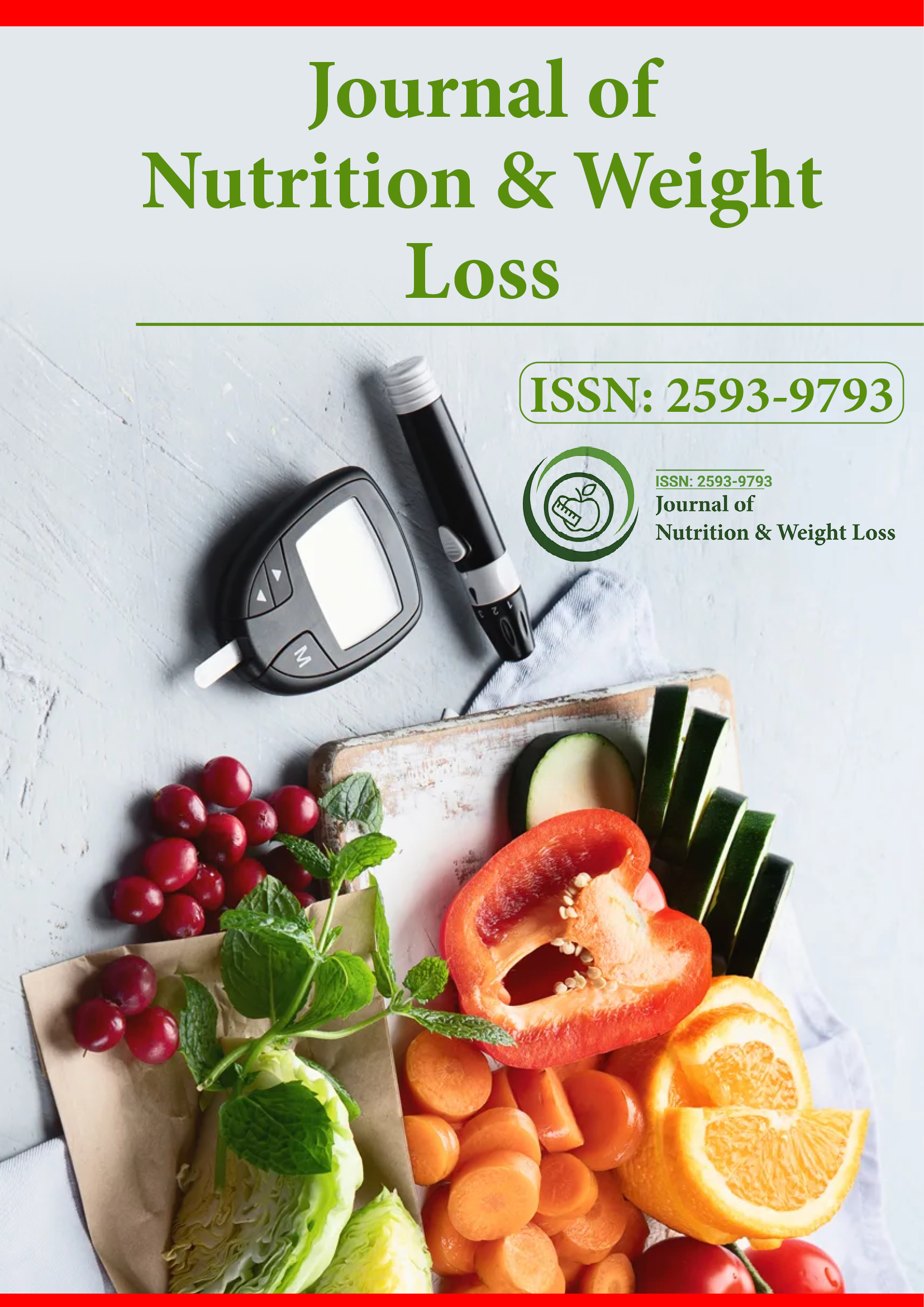Indexed In
- RefSeek
- Hamdard University
- EBSCO A-Z
- Publons
- Euro Pub
- Google Scholar
Useful Links
Share This Page
Journal Flyer

Open Access Journals
- Agri and Aquaculture
- Biochemistry
- Bioinformatics & Systems Biology
- Business & Management
- Chemistry
- Clinical Sciences
- Engineering
- Food & Nutrition
- General Science
- Genetics & Molecular Biology
- Immunology & Microbiology
- Medical Sciences
- Neuroscience & Psychology
- Nursing & Health Care
- Pharmaceutical Sciences
Perspective - (2023) Volume 8, Issue 3
Potentiality of a Medical Device for Transforming Weight Loss
Anna Jessica*Received: 28-Aug-2023, Manuscript No. JNWL-23-22914; Editor assigned: 30-Aug-2023, Pre QC No. JNWL-23-22914 (PQ); Reviewed: 13-Sep-2023, QC No. JNWL-23-22914; Revised: 20-Sep-2023, Manuscript No. JNWL-23-22914 (R); Published: 27-Sep-2023, DOI: 10.35248/2593-9793.23.8.184
Description
Obesity has become a global epidemic, with nearly 40% of the world's population considered overweight or obese. The health consequences of excess weight are well-documented, including an increased risk of heart disease, type 2 diabetes, certain cancers, and a reduced quality of life. While traditional weight loss methods like diet and exercise remain essential, medical devices are emerging as suitable methods in the fight against obesity. In this perspective article, we will explore the world of weight loss medical devices, their mechanisms, their possible benefits, and the considerations surrounding their use.
Before looking into the extent of weight loss medical devices, it's essential to know the significance of the obesity crisis. Obesity is not just a cosmetic concern but a complex medical condition with far-reaching consequences. The traditional approach to weight loss, which primarily relies on lifestyle modifications, often proves insufficient for individuals with severe obesity. This is where medical devices come into play.
Weight loss medical devices contain a diverse range of technologies and approaches, each designed to address obesity from a different angle. Here are some key categories of these devices:
• Intragastric balloons are inflatable devices inserted into the stomach through an endoscopic procedure. Once in place, they occupy space in the stomach, reducing its capacity and creating a sensation of fullness. This helps individuals consume fewer calories and lose weight
• Gastric bands, also known as lap bands, are adjustable devices placed around the upper part of the stomach. They restrict the amount of food the stomach can hold, leading to reduced calorie intake and gradual weight loss
• Gastric stimulators devices are implanted beneath the skin and stimulate the vagus nerve, which connects the brain to the stomach. By modulating appetite and digestion signals, gastric stimulators can help individuals feel full sooner and eat less
• Aspiration therapy involves a tube inserted into the stomach that allows patients to drain a portion of their meal content into a toilet shortly after eating. This reduces the caloric intake and encourages healthier eating habits
• Neurostimulation devices target specific nerves and brain regions involved in appetite and metabolism regulation. By modulating neural pathways, they aim to reduce hunger and increase the feeling of fullness
• Intragastric electrotherapy is the technology involves the implantation of electrodes in the stomach lining, which send electrical signals to regulate hunger and consummation. It's designed to help individuals eat less and make healthier food choices
The appeal of weight loss medical devices lies in their potential to offer effective solutions for individuals who have struggled with obesity for years. These devices are typically considered when other weight loss methods have failed or when obesityrelated health conditions become life-threatening:
• Many weight loss medical devices offer non-surgical approaches to weight management, reducing the risks associated with invasive surgeries like gastric bypass or sleeve gastrectomy
• Devices like gastric bands and stimulators can be adjusted to meet individual needs, allowing for personalized weight loss plans
• Successful weight loss through medical devices can lead to significant improvements in obesity-related health conditions, such as type 2 diabetes, sleep apnea, and high blood pressure
• Studies have shown that significant weight loss through medical devices can reduce the risk of premature death in individuals with severe obesity
• Many individuals who achieve substantial weight loss report an enhanced quality of life, improved confidence, and increased mobility
Considerations and challenges in weight loss devices costs, risks, sustainability, and patient selection:
• Medical devices can be expensive, and insurance coverage varies. The initial cost and potential maintenance expenses can be prohibitive for some individuals
• As with any medical intervention, there are risks associated with weight loss devices, including infection, device malfunction, and complications from the implantation procedure
• The long-term sustainability of weight loss achieved through medical devices can be challenging. Lifestyle changes are still essential for maintaining weight loss after device removal or adjustment
• Not all individuals are suitable candidates for weight loss devices. Careful patient selection is essential to maximize the likelihood of success and minimize potential risks
• Weight loss is not just a physical process but a psychological one. Addressing the behavioral and psychological aspects of obesity is vital for long-term success
In conclusion, weight loss medical devices represent a suitable method for those who struggle against obesity. While they are not a multipurpose solution, they offer valuable options for individuals who have struggled with obesity-related health issues. The decision to pursue a medical device for weight loss should be made in consultation with healthcare professionals, considering individual health status, preferences, and goals. As medical technology advances and research continues, we can expect further innovations in the field of weight loss devices. These innovations may bring even more effective, safe, and accessible solutions for the millions of individuals worldwide competing with obesity. Ultimately, the integration of medical devices with comprehensive obesity treatment approaches, including dietary and lifestyle modifications, psychological support, and ongoing medical care, holds the potential of significantly improving the lives and health of those affected by obesity.
Citation: Jessica A (2023) Potentiality of a Medical Device for Transforming Weight Loss. J Nutr Weight Loss. 8:184.
Copyright: © 2023 Jessica A. This is an open-access article distributed under the terms of the Creative Commons Attribution License, which permits unrestricted use, distribution, and reproduction in any medium, provided the original author and source are credited.


